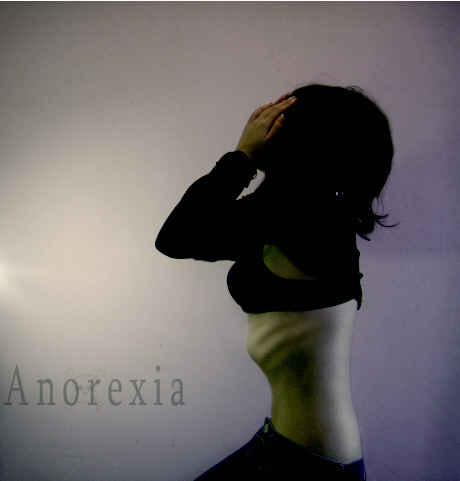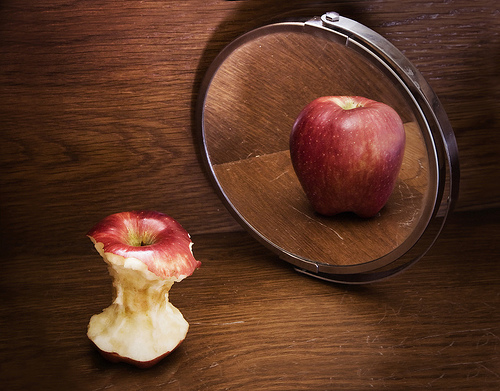
DEFINITION of ANOREXIA
What is Anorexia ? – Anorexia Nervosa is a mental illness that takes an underlying severe mood of anxiety and turns it into an obsession that harmfully restricts food intake.
Without wishing to over-dramatize – Anorexia is a serious mental illness and we call it “serious” because it can (and frequently does) result in death.
Anorexia is often referred to as an eating disorder, which makes it sound like a small disagreement over food. But it really is a killer and should be viewed by anyone trying to help an anorexic person as fundamentally dangerous.
Ignoring anorexia is not an option – as 99 times out of 100 – if left untreated – it will worsen and become a chronic illness over time.
If allowed to run its course, and if death is prevented, anorexia will still destroy various important body functions that will distressingly and permanently degrade the standard of life of the sufferer.
If not halted, anorexia can kill slowly and relentlessly – and this will happen in any social group and any race, age or sex.
If You’re Trying to Help Someone Break Free
from Anorexia – Click Here > > > Anorexia Recovery Tips
“Is It Easy to Spot Anorexia
In Another Person?”
If you are trying to spot the symptoms of anorexia in another person – there are several things you should be aware of.
Firstly – this mental illness makes the sufferer believe that they are too fat.
The anorexic becomes obsessive about controlling food intake in the mistaken belief that food control will make her (it is increasingly males – but predominantly females) more attractive.
Anorexia may also create the illusion of establishing some feeling of control, where the sufferer has previously believed they are powerless or are unable to deal mentally with loss, bereavement or a situation which makes them feel they are helpless or unable to escape or progress along a desired path.
The power of anorexia is that this control illusion is very seductive and the anorexic actually wants to protect it because they want the feeling of being in control to continue.
Secondly – Anorexia is a VERY secretive illness.
Sufferers are utterly convinced that they are overweight – even if their bones are visible.
They look in the mirror and see a fat person, when only a very thin person is truly reflected.
There is often shame involved. Anorexics will hide their true shape under floaty clothing to disguise their true appearance.
Some will express the wish to escape from their anorexia, but will feel trapped. Unable to share their problem with anyone other than other anorexics, they will continue with their regime of starvation believing that family members and friends would be so upset that they must continue to hide their true condition.
Thirdly – most anorexics have a number of tricks up their sleeves as they are usually in denial of the real dangers they face.

“When Trying to Detect Anorexia – What Should You be Looking For ?”
There are many signs you might look for – and most of them will be subtle and easy to overlook.
Here are a few – but you may discover more, once you are tuned-in to the problem.
1). In an effort to disguise her/his real intentions, your anorexic friend or family member might feign a keen interest in food and cooking.
She will happily accompany you to buy food and may also help around the kitchen, taking a keen interest in the preparation of the food, She might show a great enthusiasm in talking about recipes, but will mysteriously disappear as soon as the cake emerges from the oven or stove ready for tasting.
2). The anorexic knows she must keep her true shape hidden and will usually dress and undress behind closed doors.
3). A significant interest in going to the gym or going jogging may alert you to the problem at hand. Instead of wearing shorts, some baggy track-suit bottoms might be worn to increase sweating and to hide her thin legs from view.
4). You may find you are excluded from clothes shopping trips because the anorexic does not want to be seen trying on baggy smocks and loose trousers that are chosen to cover up the thin body.
5). She might arrive late for meals saying she has already eaten elsewhere. Or she might leave early with a cheery wave and telling you not to worry as she’ll pick up something to eat where she’s going.
The truth is that she is missing meals altogether and working hard to conceal the fact.
6). Although anorexics are obsessively avoiding eating, they may also display a compulsive interest in diets and in counting and comparing calories in food that they have no intention of eating.
7). People with anorexia often have some additional problems with bulimia. This involves binge eating large amounts of food and then immediately and artificially emptying the stomach of the food before the body has a chance to benefit or absorb any nutrients.
[Read more about Bulimia > > > “What Is Bulimia?!”]
8). If you start to notice something is wrong and you begin to ask her probing questions – it is vitally important that you are not deflected by “Don’t worry I am fine – really” or “Nothing” is wrong at all, I am really happy” and similar responses.
Remember – anorexics are highly secretive and the last thing they want is you poking your well-meaning but unwelcome nose into their underground world of starvation and control.
You must be switched-on to the fact that this problem is not going away by itself.
Although the pressure may become intense, you must not allow yourself to be deflected.
And have it clear in your mind that anorexia is not just a normal phase of growing up.
Essentially – you must not believe that this will all sort itself out in time.

Some Anorexia facts and Figures
Anorexia is by far the largest cause of deaths related to mental health issues.
Anorexia develops most commonly in girls and women.
One in every 200 women is affected by anorexia worldwide.
One in every 2,000 men worldwide is affected by anorexia.
Anorexia symptoms normally first develop during the years 11 to 19 with a typical average age of 15, however anorexia may develop at any point, including both early childhood and much later in life.
Some eating disorder experts have expressed concern that the number of men with anorexia seems to be on the rise.
